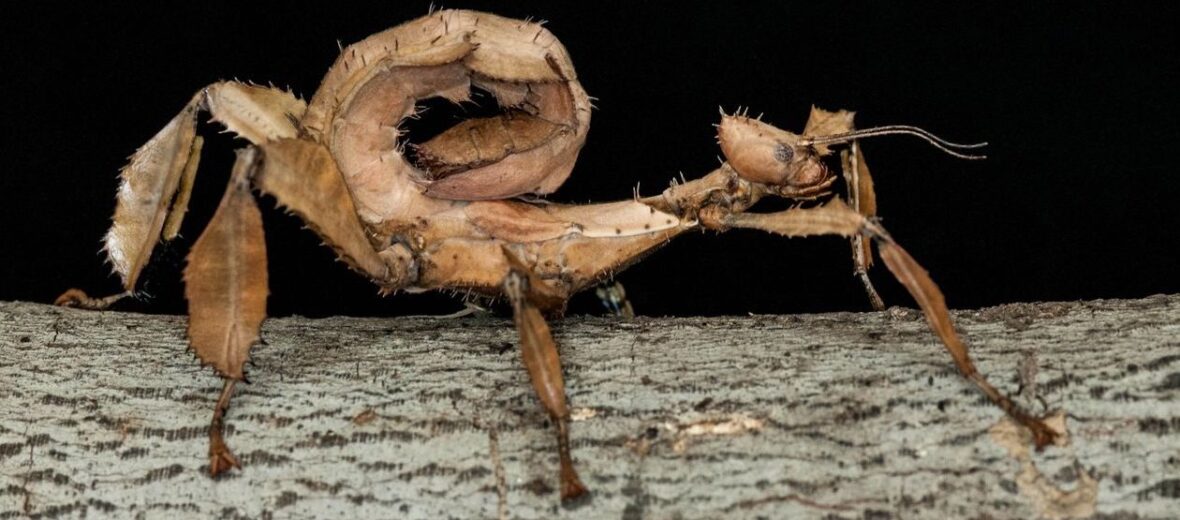
The giant prickly stick insect, also referred to as Macleay’s Specter stick insect, is a large stick insect from Australia and New Guinea. This species of stick insect looks more like a cactus than like a twig. The males have large wings and are actually good flyers. Stick insects are found in tropical and forest regions. The giant prickly stick insect is not able to bite or sting, so it relies solely on passive defense and camouflage.
First the Stats…
Scientific name: Extatosoma tiaratum
Weight: Up to 3+ ounces
Length: Up to 8 inches
Lifespan: Up to 18 months
Now on to the Facts!
1.) These stick insects are nocturnal (active at night).
2.) If they are threatened, they will curl their tail up in an effort to mimic a scorpion. Sometimes they will even raise their front legs in order to mimic the pedipalps (pincers) of a scorpion.
3.) Adults make clicking sounds and can release a defensive odor that smells like toffee. Males may also try to startle predators by flashing their wings open.
4.) They eat the leaves from the blackberry, raspberry, oak, rose, hazel, and eucalyptus plants/trees.
5.) Stick insects are sexually dimorphic in that males and females are easy to tell apart. Adult females are large, heavy, and lack large wings. The males are long and slender and have very long wings that reach past their abdomen. Males also have very long antennae.
But wait, there’s more on the giant prickly stick insect!
6.) The giant prickly stick insect can reproduce both parthenogenetically (produce young without the presence of a male) and sexually. When the female reproduces parthenogenetically, she will lay eggs that develop into only females. When she mates traditionally, she will lay eggs that will develop into both males and females.
7.) The nymphs born from parthenogenic means are typically weaker and the eggs need almost twice the time to hatch than fertilized eggs.
Did you know…?
Stick insects eat their freshly shed skin as their first post molt meal!
8.) Eggs hatch after 4 – 6 months when the female is fertilized by a male. Parthenogenetic eggs hatch after 6 – 12 months.
Now a Short Giant Prickly Stick Insect Video!
Also, check out the Critter Science YouTube channel. Videos added frequently!
Want to suggest a critter for me to write about? Let me know here.




Leave a Reply